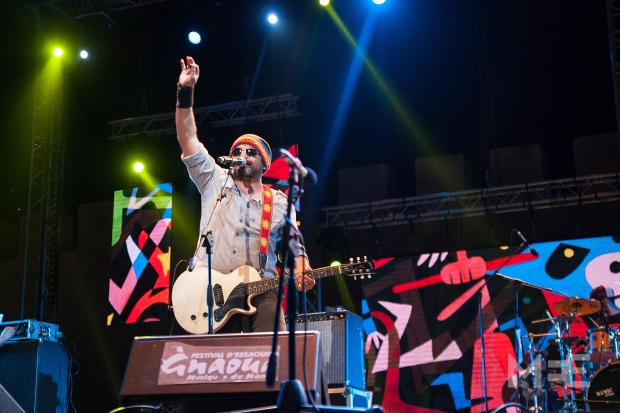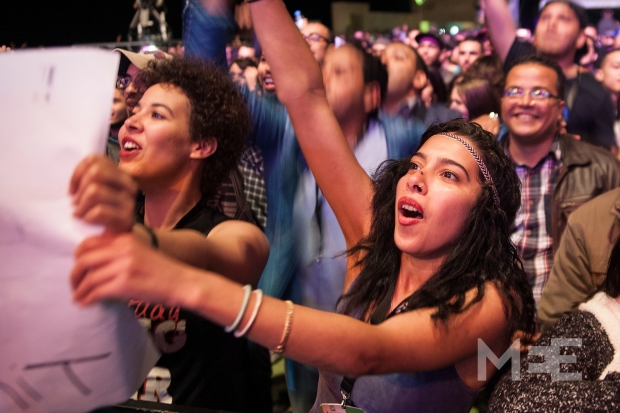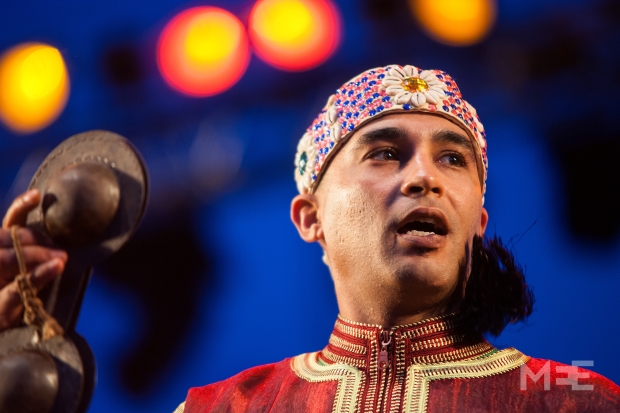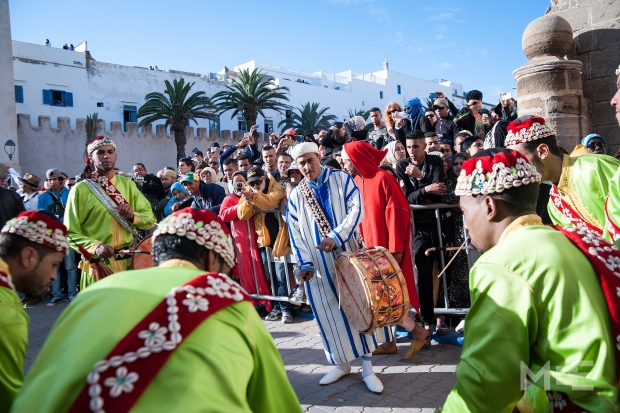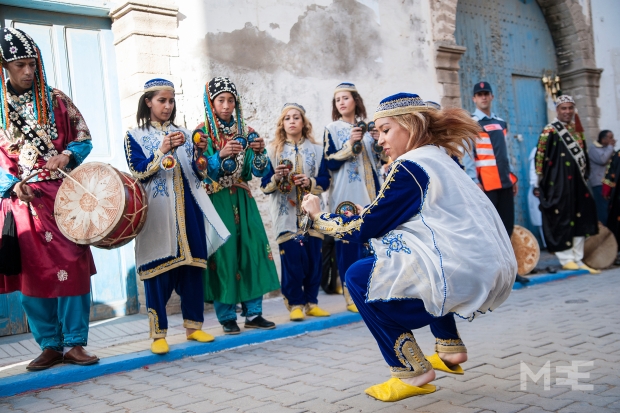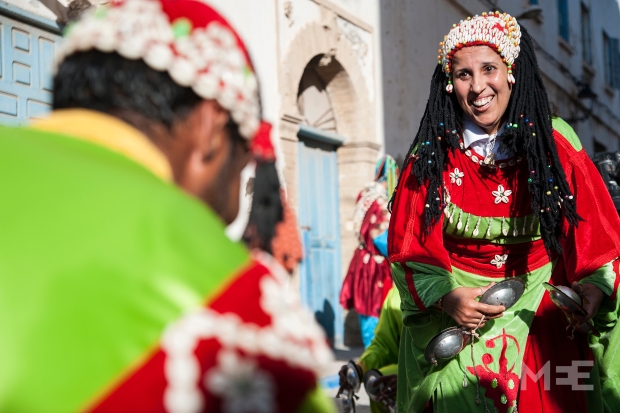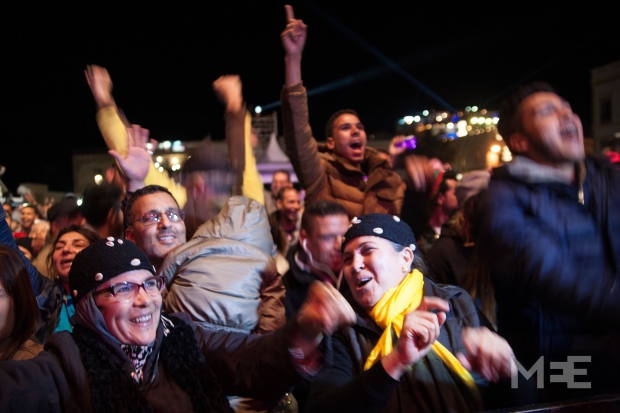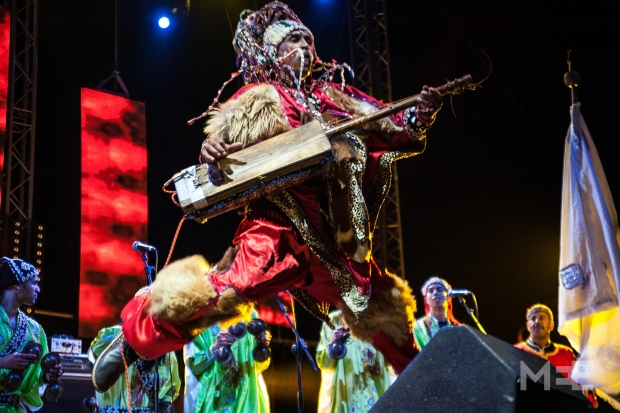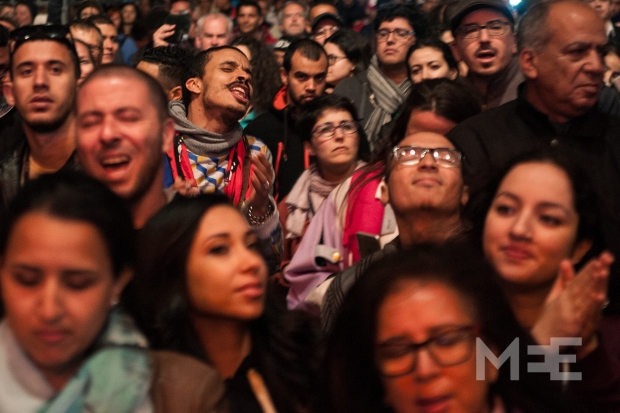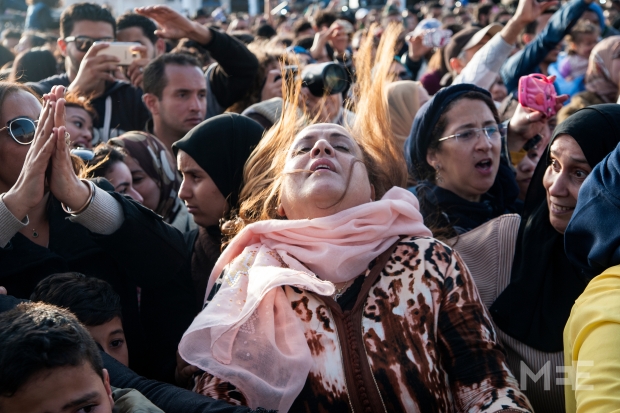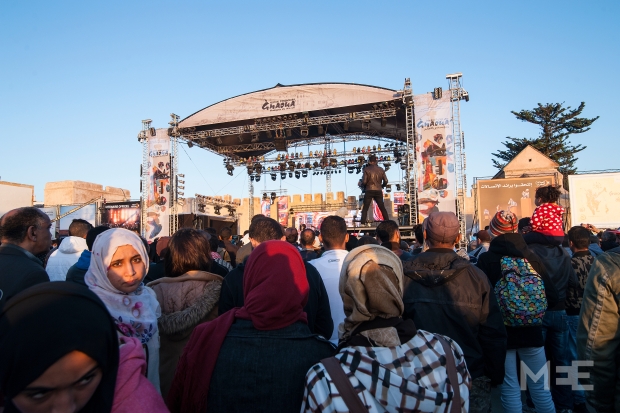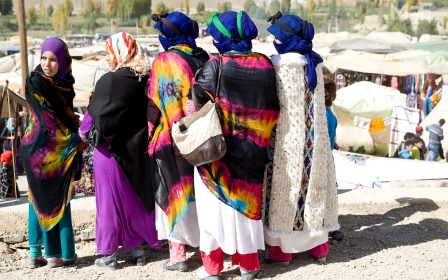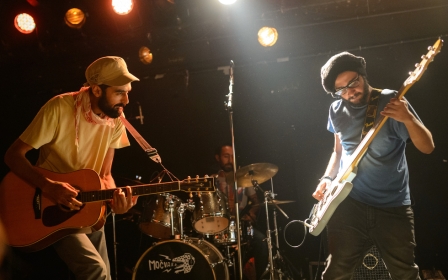Essaouira: The Moroccan city of winds in a sacred trance

The Morrocan city of Essaouira was in a trance-like state during the 19thGnaoua and World Music Festival that took place in the Atlantic Ocean's coastal city between 12-15May. More than 300 artists from six countries performed at six venues for a four-day festival that attracted foreigners, hippies, children, the elderly, and spiritual souls that could not help but fall prey to the hypnotic beats of the musicians whose roots stem from sub-Saharan Africa.
Well-known Gnaoua musicians performed their traditional mystic sounds alongside international stars from other genres such as 90-year-old jazz pianist, Randy Weston, and the Moroccan version of The Clash, Hoba Hoba Spirit, creating an amalgam of world music that danced on its own against a backdrop of white-washed beach houses and crisp blue shutters.
The two major venues, one at the beach and one in the main square of the wonderful old medina, were free to attend, and only the more intimate concerts in the smaller spaces came with entry fees.
Though Gnaoua music is fast and mesmerising and has a rhythm similar to that of techno sounds, its lyrics are spiritual. A group consists of many musicians - the maalem (a recognised master of Gnaoua music and spiritual traditions) plays the guembri (a three-stringed bass lute) and other members of the group play drums and qaraqab (iron castanets).
The history of Gnaoua culture
During the 11th century Almoravid dynasty, slavery, conscription and trade brought people from West Africa - present-day Mali, Burkina Faso and the Senegal area - to the Maghreb, which is now split into Morocco, Algeria and Tunisia. It is believed that large groups of enslaved people came from Ancient Ghana (a kingdom north of Mali) in the 11th and the 13th centuries, and these enslaved groups were called the Gnaoua. The descendants of these people are the present-day Gnaoua, arguably Morocco's most colourful Muslim ethnic group.
While they have retained many of the customs, rituals and beliefs of their ancestors, their music is the most preserved trait. Marrakesh and Essaouira are cities known historically to have had slave markets connected to the trans-Saharan slave trade. Gnaoua artists play a social and spiritual role in society as well as in entertainment.
The Gnaoua originally used their music and dance to heal the pain of their captivity as lyrics contain many references to the privations of exile and slavery. In some songs, one can find words that express the trauma of being displaced and the deep hurt of losing one's home.
Women in Gnaoua culture
This year’s festival saw an increase in women singing and dancing and playing the qarqaba. Maalem Abdenbi el-Meknassi wa Banat al-Gnaoua (Maalem Abdenbi el-Meknassi and the Gnaoua Girls) was one such group.
From Meknes, he brought five out of the 10 women constituting his group to perform in Essaouira. Maalem Abdenbi el-Meknassi comes from a traditional Gnaoua family line, his father being a maalem as well. Questioning him about how society reacts to female Gnaoua musicians, he muses: “Don’t forget my mother is a woman, my wife is a woman. People who have daughters understand. There should be freedom and equality for women in culture, in our culture and also in Islamic culture.”
Apart from some talented guembri players, so far there are no female masters. “But the doors are open, women just entered into being Gnaoua musicians. With experience and increased spirituality a woman can of course become a maalema over time," explains Maalem Abdenbi el-Meknassi.
Gnaoua musicians are often initiated into the art during their early childhoods, and are accepted by a maalem once they reach their teens. It is normal that it can take decades to reach the spiritual and musical maturity of a maalem, or maybe soon also a maalema - the female version.
Like everything else, Gnaoua music and culture has entered the era of social media. Khalil Mounji is the founder and CEO of gnaouaculture.org and with this website he hopes to promote the music and culture of real Gnaoua to a wider audience. They have even developed an app called "Play Guembri".
Healing nights
The music is originally performed in private ceremonies called derdeba (possession rites) which generally take place late at night. For this reason, they are also called al-lila (night) for therapeutic or healing purposes. Someone who is plagued by depression, trauma or other mental health problems might often seek the help of a Gnaoua derdeba.
Women have always played a central role in Gnaoua traditions, not as musicians, but as moqademma, a soothsayer or priestess who would facilitate al-lila. When a client approaches her, she will hire the musicians and prepare the space with candles, incense and other needed artefacts. Additionally, she would prepare food and take care of the person who is seeking healing.
The festival is also a good opportunity to get a first-time experience of Gnaoua art. “To really understand Gnaoua you have to be born into it, you have to live it. It is quite a closed group," says Morrocan photographer, Hassan Hajjaj, whose portraits of maalems were exhibited during the festival. Hassan was not born into Gnaoua, but was raised to love and respect its art and culture.
Late one night, an intimate and very spiritual concert named "Colours of Gnaoua" took place in Dar Loubane, in a traditional riad in the old medina, where some of the most revered maalems - none of them younger than 70 - performed their regional styles.
Lyrics differ from region to region, nearly always containing references to local saints, besides praising Allah and the Prophet Muhammed. Certain songs are performed with a specific dance or choreography. Often the sequence of steps is very repetitive, which helps the dancer easily enter into a trance-like state.
It was a very intense and emotional lila and people from the audience often seemed to start dancing, as if they felt that that particular song could help them. One older man in particular came several times to the front of the musicians and danced his very personal transcendental dance, clearly experiencing a catharsis.
Photography and mobile phones were not allowed during al-lila concerts due to their personal and intimate nature. The space is considered a protected and sacred space, held by the maalem and the other musicians, and also the moqademma if it is a private ceremony. It is believed that the dancers or "patients" deserve to safely enter a state of trance and ecstasy without distractions.
The spiritual and sacred rituals are not usually intended to be performed in large concerts, but the smaller venues still allowed for a more intense spiritual experience. The hopes of the attendees are that all of the evil spirits and bad feelings will have been expelled until next year when the festival will have its 20th anniversary.
Middle East Eye propose une couverture et une analyse indépendantes et incomparables du Moyen-Orient, de l’Afrique du Nord et d’autres régions du monde. Pour en savoir plus sur la reprise de ce contenu et les frais qui s’appliquent, veuillez remplir ce formulaire [en anglais]. Pour en savoir plus sur MEE, cliquez ici [en anglais].


